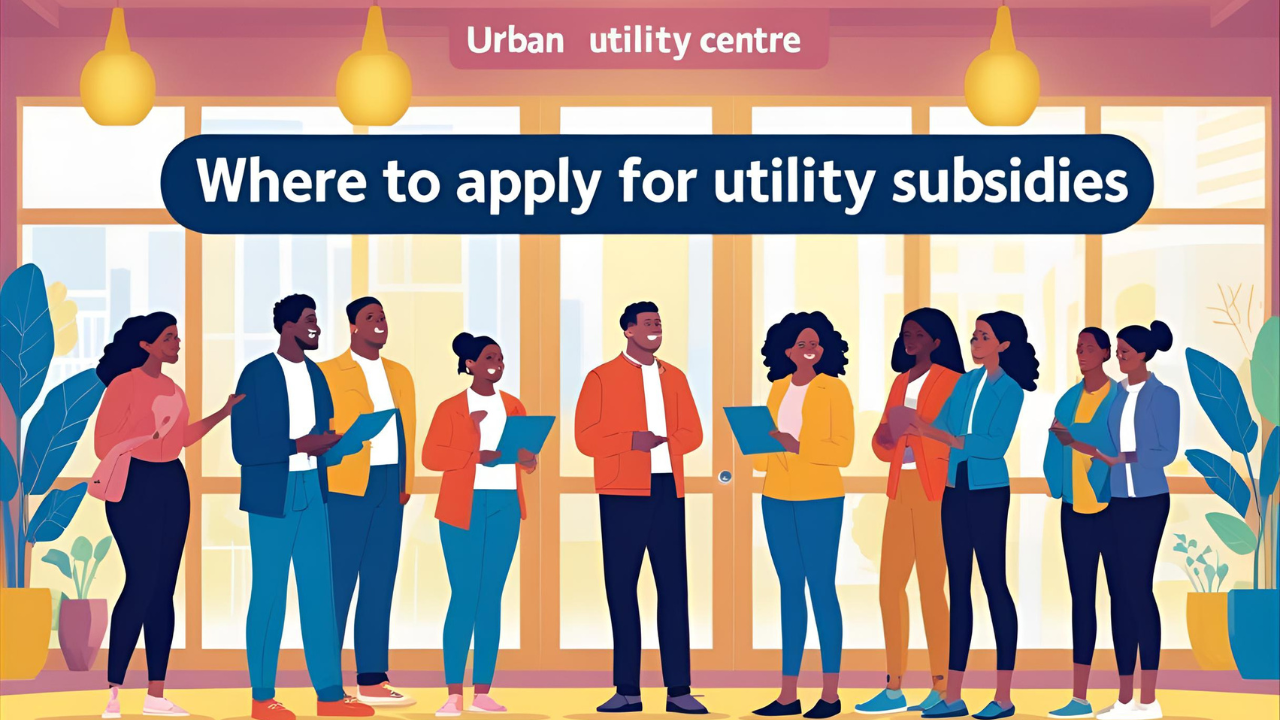As utility costs continue to climb, more households are turning to subsidy programs and rebate schemes to manage their energy and water bills. These financial assistance programs are designed to help low- to moderate-income families, seniors, and others in need reduce monthly utility expenses, avoid disconnections, and improve home efficiency.
If you’re wondering where and how to apply for utility subsidies and rebates in 2025, this guide breaks it down clearly—whether you’re seeking heating bill help, water discounts, or energy-saving incentives.
Table of Contents
- What Are Utility Subsidies and Rebates?
- Who Can Qualify for These Programs?
- Types of Utility Assistance Available in 2025
- Where to Apply: Federal, State, and Local Programs
- Required Documents and Eligibility Verification
- Tips for a Smooth Application
- Final Thoughts: Don’t Miss Out on Energy Relief
1. What Are Utility Subsidies and Rebates?
Utility subsidies are financial aid programs that help pay for ongoing utility bills, such as electricity, gas, water, and heating. These may come in the form of monthly credits, percentage-based discounts, or direct payments to utility providers.
Rebates, on the other hand, typically reimburse you for energy-efficient upgrades or new appliances that reduce power and water usage—like solar panels, insulation, or ENERGY STAR appliances.
Both options aim to reduce household utility burdens while promoting long-term energy efficiency.
2. Who Can Qualify for These Programs?
Eligibility requirements vary depending on the program and location. However, you may qualify if you:
- Have low to moderate income based on local area median income (AMI)
- Receive benefits like SNAP, Medicaid, SSI, or TANF
- Are unemployed, underemployed, or recovering from financial hardship
- Are a senior citizen, person with a disability, or veteran
- Live in a household with young children or medical equipment that increases utility usage
Some rebate programs are open to all residents, while others are income-based or need-based.
3. Types of Utility Assistance Available in 2025
Here are the most common utility relief programs available in the U.S. and many other countries:
a. Low Income Home Energy Assistance Program (LIHEAP)
Helps eligible households with heating, cooling, and electricity bills. Often includes crisis support during weather emergencies.
- Apply through your state’s LIHEAP office or local community action agency.
- Visit: www.acf.hhs.gov/ocs/liheap
b. Weatherization Assistance Program (WAP)
Provides free home upgrades to improve energy efficiency—like insulation, HVAC repairs, and weather stripping.
- Find your state provider via energy.gov
c. Utility Company Assistance Plans
Many power and water companies offer their own bill discount programs or payment plans. Some may forgive past-due balances or offer rebates for energy-saving products.
- Visit your utility provider’s website or call customer service.
- Ask about programs like CARE, Budget Billing, or Lifeline utility discounts.
d. State and Local Rebates
Many states offer rebates for installing solar panels, efficient water heaters, or LED lighting systems.
- Use the DSIRE tool to find rebates by zip code.
4. Where to Apply: Federal, State, and Local Programs
Here’s where you can start the application process, based on the type of program:
| Program Type | Where to Apply |
|---|---|
| LIHEAP / Energy Subsidy | State Human Services or Community Action Agency |
| Water Bill Assistance | Local city or municipal water authority |
| Utility Company Discounts | Your utility provider’s website or local office |
| Weatherization Assistance | State energy department or energy.gov |
| Appliance Rebates | State rebate portals or Energy Star partners |
| Crisis/Emergency Utility Help | Local nonprofits like United Way, Salvation Army, or 2-1-1 |
Pro Tip: You can also call 2-1-1 from any phone in the U.S. to get connected with nearby utility aid programs.
5. Required Documents and Eligibility Verification
When applying for subsidies or rebates, you’ll typically need:
- A government-issued photo ID
- Proof of address (utility bill, lease, etc.)
- Income verification (pay stubs, benefits letter, tax return)
- Recent utility bills showing usage or payment history
- Social Security numbers for all household members (for income-based programs)
Be sure to check each program’s requirements online or call their office for exact documentation lists.
6. Tips for a Smooth Application
To avoid delays and maximize your chances:
- Apply early—many programs have limited funds and operate on a first-come, first-served basis.
- Double-check your information—make sure your name, address, and income details match across documents.
- Keep copies of everything you submit.
- Ask about automatic enrollment—some benefits (like Medicaid or SNAP) can make you automatically eligible for utility help.
- Reapply annually, if needed—most programs require yearly recertification.
7. Final Thoughts: Don’t Miss Out on Energy Relief
Rising electricity and water bills can become overwhelming, especially for fixed-income households. But with the wide range of utility subsidies and rebates available in 2025, relief is just a few clicks or phone calls away.
Whether you’re a renter, homeowner, or living in shared housing, don’t hesitate to apply. These programs are designed to help, and millions of people use them every year to keep their lights on and water running.
Take action today—check what’s available in your area and start your application. Small savings each month can make a big difference over time.

